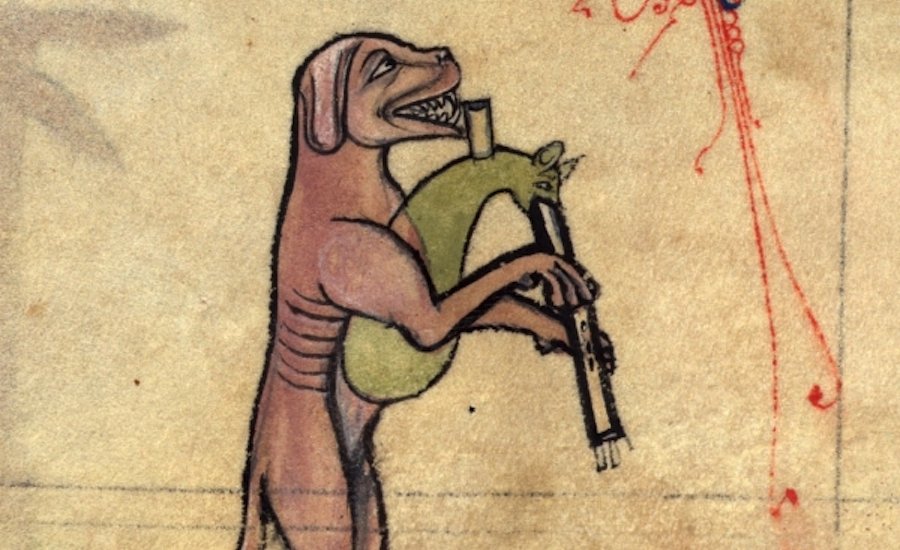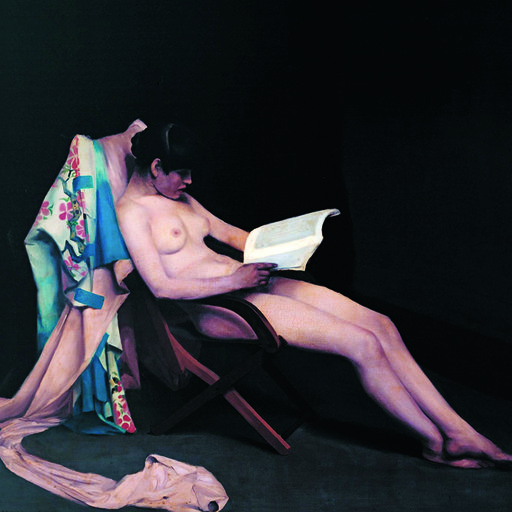Hey! Hey, you !
Yes, you, the one slowly sipping your iced coffee and wondering exactly who God thinks he's talking to with this absolutely unconscionable heat (I understand that the apocalypse is coming and it’s our fault for killing the environment or whatever, but do my forearms really need to be sweating? This seems pointed ).
 Detail of Jan Van Eyck,
The Last Judgement
, 1440 via Artsy
Detail of Jan Van Eyck,
The Last Judgement
, 1440 via Artsy
Quick question—are we living through the Dark Ages, again? Or rather, do you think we’re living through the first true Dark Ages? Historians have stepped back from Petrarch’s characterization of the Roman Empire’s fall as a point of abysmal cultural decay, noting that our social fetish for the Enlightenment era tends to center racist and sexist dogma, (not that the Medievals had much of a grip on anything other than witch-burning and mead), but as we dance towards the end of a world rife with religious extremism, brutal cruelty, intellectual degradation and bad, bad hair, I can’t help but wonder what we can learn from this particular periodicalization of yesteryear. Apart from, like, "brush your teeth" and "don't marry children," that is.
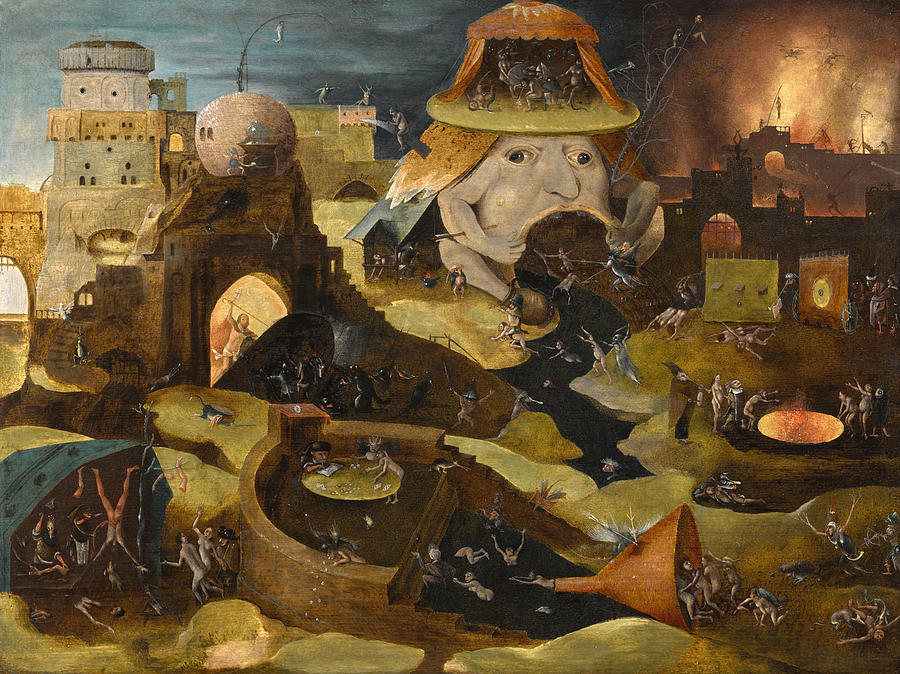 The Harrowing of Hell by Follower
of Hieronymus Bosch via Fine Art America
The Harrowing of Hell by Follower
of Hieronymus Bosch via Fine Art America
Maybe that’s too ambitious, though. Do you just want to look at dogs? Let’s just look at dogs. It’s hot.
Still, before we go too far, I want to remind any potential readers of this sterling piece of art journalism that bad dogs do not exist , and I won't allow any slander here on Artspace.com. All dogs are good dogs, and just because prior to the proliferation of two-point perspective monks portrayed animals as if they had been microwaved for a solid fifteen minutes over the suggested time limit does not give you heathens license to run your mouths, okay? They may be fictional, but these pups are sensitive.
That being said, here are 6 wicked ugly medieval dogs.
1. This Disquieting Dutch Fish-Dog Hybrid
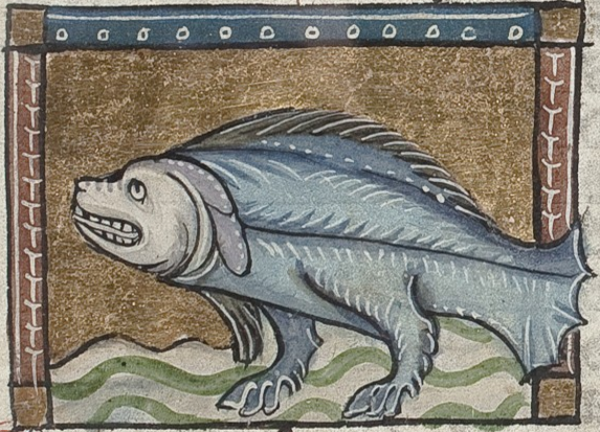 via National Library of the Netherlands
via National Library of the Netherlands
This 100% real and definitely not nightmare-inspired canine lives in 13th century Dutch poet Jacob van Maerlant's Der naturen bloeme , which more or less functioned as the 1350 version of Wikipedia. Unlike many other illuminated manuscripts of the era, it was written in Dutch as opposed to the standard Latin, but it still took on the deeply classical task of itemizing all extant flora and fauna in the style of the landmark Greek Physiologus, a foundational ancient text that describes fifty-odd animals, monsters, and minerals (we stan an empiricist!). In Maerlant's iteration, he carefully alphabetizes every sort of human, quadruped, sea creature, reptile, metal, and herb he could think of, and the results are nothing short of stunning and shockingly comprehensive, spanning some thirteen volumes.
So... what in the Forbidden Forest is happening here? Is Aquaman okay? I also have a lot of questions for Jacob. I know drug laws are different in Amsterdam, but this is a bridge too far, sir.
2. Saint Christopher Who Is Also A Dog But It's... Fine?
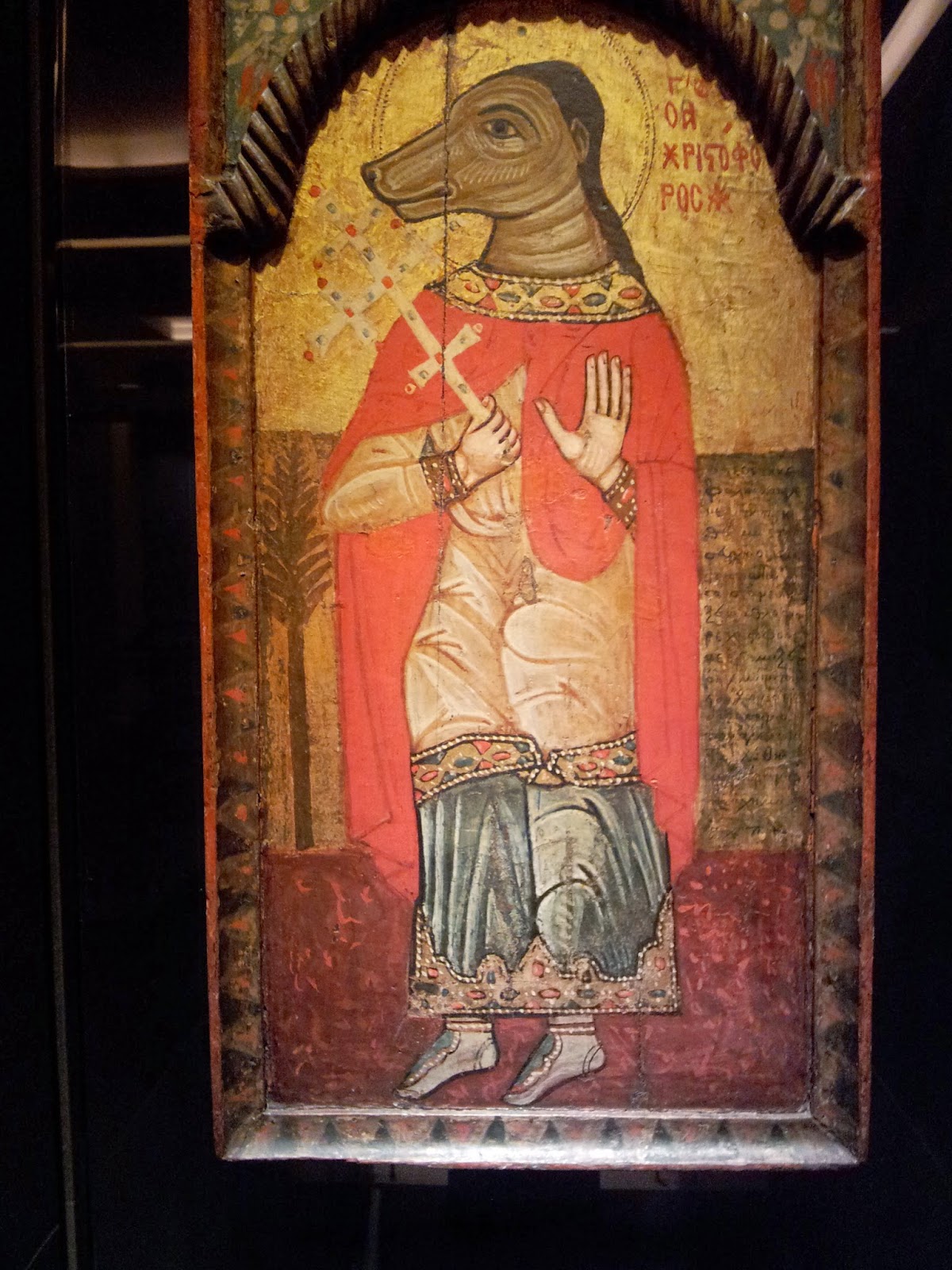 Saint Christopher in the Byzantine and Christian Museum in Athens via Greek Churches
Saint Christopher in the Byzantine and Christian Museum in Athens via Greek Churches
Okay, I was today-years-old when I found out about cynocephaly, the pan-cultural mythical phenomenon characterized by dog heads appearing on human people. Apparently, this weird narrative slippage existed in all sorts of civilizations, including Greece, Egypt, China, and England, and for a variety of different symbolic reasons. While the ancient Greeks pilfered their versions from the Egyptian deities Duamutef, son of Horus and Anubis, god of the dead, the Medieval Byzantines, specifically in the Eastern Orthodox Church, had a really stupid reason for transforming Saint Christopher into, well, Brian Griffin from Family Guy . Apparently, hagiographers misread the Latin term Cananeus , meaning Canaanite, as Canineus , meaning canine, and no one thought to ask any follow-up questions. As a result, Saint Christopher was portrayed as a, well... you get the picture. The dog's head icon of Saint Christopher was officially proscribed by Moscow orthodoxy in the 18th century, but they couldn't do much about the hundreds of Byzantine beagles plastered on church walls all over the world, so... here we are, I guess.
Spell-check, kids.
 via Orthodox Arts Journal
via Orthodox Arts Journal
3. Just... Wow
So, Andre Thevet was a French Franciscan priest, explorer, cosmographer and writer best known for his ethno-historical accounts of the New World, or, more specifically, Brazil, which inspired one of his most famous works, the 1575 Cosmographie universelle , an attempted catalog of every single occurrence on Brazilian soil, or at very least, the parts he could see. Multiple illustrated versions of the text exist, but there's a special place in my heart for the poor bastard tasked with drawing this particular creature:
 via Bibliotheque nationale de France
via Bibliotheque nationale de France
Look at this utter triumph of terror. What was the thought process here? Who would insult Goofy like this? Can you call the police on a dead guy? Asking for a friend.
4. I Don't Want To Look At This Demon Ever Again
First of all—
 Tomb of William Courtenay, Archbishop of Canterbury (1381-1396), Canterbury Cathedral via Flickr
Tomb of William Courtenay, Archbishop of Canterbury (1381-1396), Canterbury Cathedral via Flickr
Does anybody have a rosary? Because that is a cursed image, fam. I'd bet a burrito we're looking at a haunting, here. Two burritos, even.
 Via Flickr
Via Flickr
All the way yikes.
For context, this goat-faced poltergeist allegedly belonged to William Courtenay, the Archbishop of Canterbury until his death in 1396. Previously the Bishop of Hereford and the Bishop of London, Courtenay's political life coincided with Edward III's dotage and most of Richard II's reign. He was a firm believer in the rights of the English Church, a staunch traditionalist, and wasn't particularly interested in reformers, rioters, or heretics. He also loved pets that looked like beasts sent straight from the pits of Hades.
This charming abomination lives in Canterbury Cathedral, which obviously now needs to be razed post-haste. Hopefully the other ghosts will keep Cerberus in check.
5. It's Not Easy Being A Furry Murderer
 A dog attacking its master's killer via The British Library
A dog attacking its master's killer via The British Library
Loyalty was hugely prized in the Middle Ages, especially amongst men's best friends. The 14th-century author of Goodman of Paris remarked how "a greyhound, mastiff or little dog, whether on the road, or at table, or in bed, always stays close to the person who gives him food and ignores all others, being distant and shy with them. Even if far away, the dog always has his master in his heart. Even if his master whips or throws stones at the dog, the dog will still follow him, wagging his tail and lying down in front of his masters to placate him. The dog will follow the master through rivers, woods, thieves and battles."
Apparently this extended to revenge, as illustrated in this theological manuscript, entitled Harley MS 3244 , from 1236. This section depicts a dog being trained to avenge his master's death in combat, which feels a little... athletic, for a gaggle of what ultimately look like sinister squirrels.
6. I Give Up, I Truly Do
 via Bark Post
via Bark Post
What is there to say about the blue kangaroo-dog hybrid staring menacingly at a man it may have just killed? Truly, life before cell-phones was a minefield, y'all.
So, remember, gorgeous readers: pat your pups, bring water with you on walks so they don't expire, and never, ever, ever, ever leave them in a car. Also, if you're going to paint or sculpt a dog, perhaps hazard a little sketch, first?
No?
Fine.
RELATED ARTICLES:
54 Art History Memes That Belong in the Effing MoMA
Did Someone Say Jean Arf? 8 Dogs (And Their Artists Humans) in the Year of the Dog











